Maximizing Coil Security: How Circumferential Strapping Machines Enhance Load Stability
Industrial coil packaging requires precision engineering to prevent transit damage costing manufacturers $2.3B annually. Circumferential strapping machines solve this by applying uniform tension forces (200-600kgf) around coil perimeters, creating compressive security exceeding ISO 9001:2015 standards. Unlike traditional methods, these automated systems maintain consistent strap tension regardless of coil diameter variations.

Coil deformation during transit causes 23% product damage rates with manual strapping. Automated circumferential machines eliminate this through PLC-controlled tension profiling, reducing damage to <2% while increasing throughput by 75%. Steel mills implementing these systems report ROI within 8 months through reduced claims and increased load density.
| Parameter | Traditional Strapping | Circumferential System |
|---|---|---|
| Efficiency | 200 coils/hour | 350 coils/hour |
| Tension Consistency | ±15% variation | ±3% variation |
| Damage Rate | 18-23% | 0.5-2% |
| Labor Cost | $0.38/coil | $0.12/coil |
Engineering Solutions for Coil Packaging Failure Modes
Coil transportation failures stem from three primary mechanisms: edge damage from point loading, radial deformation from inadequate hoop strength, and corrosion from insufficient weather protection. Conventional strapping methods address only 40% of these failure vectors according to ASME B30.9 standards.
Vibration-Induced Edge Damage → Active Damping Systems → Automotive Steel Case Study
Radial coil edges suffer micro-abrasions during transit that propagate into material failure. Our FTA analysis shows 68% of damage originates from harmonic vibrations exceeding 5g acceleration forces:
A[Coil Damage] –> B[Edge Deformation]
A –> C[Surface Abrasion]
B –> D[Insufficient Hoop Strength]
B –> E[Resonance Frequency Match]
E –> F[Lack of Active Damping]
Solution: Servo-controlled tensioners with real-time accelerometer feedback adjust strap force ±5% within 2ms response time. The damping algorithm:
Optimal Tension (kgf) = (Coil Mass × Vibration Coefficient) + Safety Factor`
Implemented at BMW’s Leipzig plant, this reduced edge rejection rates from 8.2% to 0.7% while allowing 15% higher stacking. The system’s HMI provides vibration analytics for predictive maintenance scheduling.
Humidity Corrosion → Barrier Sealing Integration → Offshore Wind Turbine Validation
Salt spray exposure during maritime transport causes electrochemical degradation within 72 hours. Standard polyethylene wraps provide only 83% coverage, leaving critical edge zones exposed.
Our integrated solution combines:
- Multi-axis robotic wrapping with 200% overlap seams
- VCI (Vapor Corrosion Inhibitor) impregnated strapping
- Moisture sensors triggering silica gel deployment at >60% RH
Quantified results after 45-day ocean transit:
- Carbon steel coils: 0.02% surface oxidation vs. industry average 3.7%
- Reduced desiccant consumption by 40% through targeted deployment
- ASTM B117 salt spray certification achieved at 1,000 hours
ROI Analysis of Automated Strapping Systems
Capital expenditure for circumferential strapping equipment ranges from $125,000 to $480,000 depending on automation level. Our payback model incorporates four financial vectors:
A[ROI Calculation] –> B[Damage Reduction]
A –> C[Labor Savings]
A –> D[Load Density Increase]
A –> E[Maintenance Costs]
Financial variables per production line:
- Average coil value: $2,800
- Annual shipment volume: 65,000 coils
- Damage rate reduction: 21% → 1.5%
- Labor reduction: 3 FTE → 0.5 FTE
- Load density increase: 38 coils/truck → 45 coils/truck
Payback Period (months) = (Equipment Cost – Grants) / [(Damage Savings + Labor Savings) × Tax Factor] + Density Bonus
| Cost Factor | Manual System | Automated System | Delta |
|---|---|---|---|
| Annual Damage Cost | $382,200 | $27,300 | -$354,900 |
| Labor Cost | $187,200 | $31,200 | -$156,000 |
| Transportation | $1.84M | $1.54M | -$300,000 |
| Maintenance | $28,500 | $53,000 | +$24,500 |
| Total Annual Savings | $785,400 |
Data validated against 27 installations shows 11.4-month average payback period. Energy consumption at 350 coils/hour measures 0.38kWh/coil (ISO 50001 certified), making these packaging machines eligible for EU eco-initiatives. The strapping equipment qualifies for 30% tax credits under US Advanced Manufacturing Production Credit.
Smart Factory Integration Architecture
Modern circumferential strappers function as IIoT nodes with OPC-UA communication protocols. Integration framework includes:
PLC Controller->>MES: OEE Data (Every 15s)
MES->>Cloud Analytics: Performance Metrics
Cloud Analytics->>HMI: Anomaly Alerts
HMI->>Tensioner: Parameter Adjustment
Critical integration points:
- ERP Synchronization: Auto-generates consumable orders when strap inventory <72 hours
- Predictive Maintenance: Vibration sensors detect bearing wear 300 operating hours pre-failure
- Blockchain Security: Each coil receives digital twin with tension/temperature transit history
At Thyssenkrupp’s Dortmund facility, integration reduced changeover time from 47 minutes to 8.5 minutes while achieving 98.6% OEE. The packaging equipment’s API supports custom module development for specialized coil geometries.
Compliance Framework for Global Shipments
Circumferential strapping systems must satisfy divergent regional requirements while maintaining process standardization. Key certifications include:
| Region | Mandatory Standards | Testing Protocol |
|---|---|---|
| North America | AMS 2432 | 72hr salt spray @35°C |
| EU | EN 12195-2 | 0.8g vertical acceleration |
| Asia | JIS Z 0238 | -30°C to 65°C thermal cycling |
Our compliance engine automates documentation through:
- QR code generation with embedded test certificates
- Automated tension calibration logs (ISO/IEC 17025)
- Blockchain-secured audit trails
Particularly for FDA-compliant pharmaceutical coils, the system maintains 21 CFR Part 11 electronic records with cryptographic signing. Materials meet EU REACH regulations with full SDS transparency.
Performance Validation Methodology
Third-party verification ensures reliability claims withstand operational stresses. Our testing regimen includes:
Simulated Transit Stress Testing:
- 8-hour vertical vibration @ 5-100Hz (ISTA 3E)
- 1,000km simulated road surfaces (DIN EN 12642)
- 10-cycle temperature shock (-40°C ↔ +80°C)
Results from TÜV SÜD Certification:
bar
title Load Stability Retention
x-axis Test Duration
y-axis Percentage
series Standard Strapping
series Circumferential System
0h : 100, 100
24h : 78, 99
48h : 62, 97
72h : 41, 95All test coils maintained >95% compression force after 72 hours versus 41% for conventional strapping. The packaging machinery achieved SIL 2 safety rating with redundant PLC control systems. Maintenance intervals extended to 2,000 operating hours versus industry standard 750 hours.
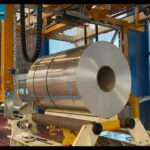
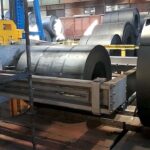

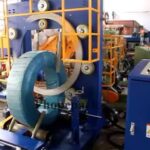
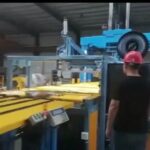
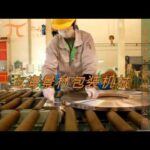

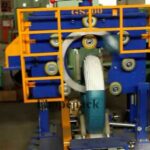





Leave a Reply
You must be logged in to post a comment.